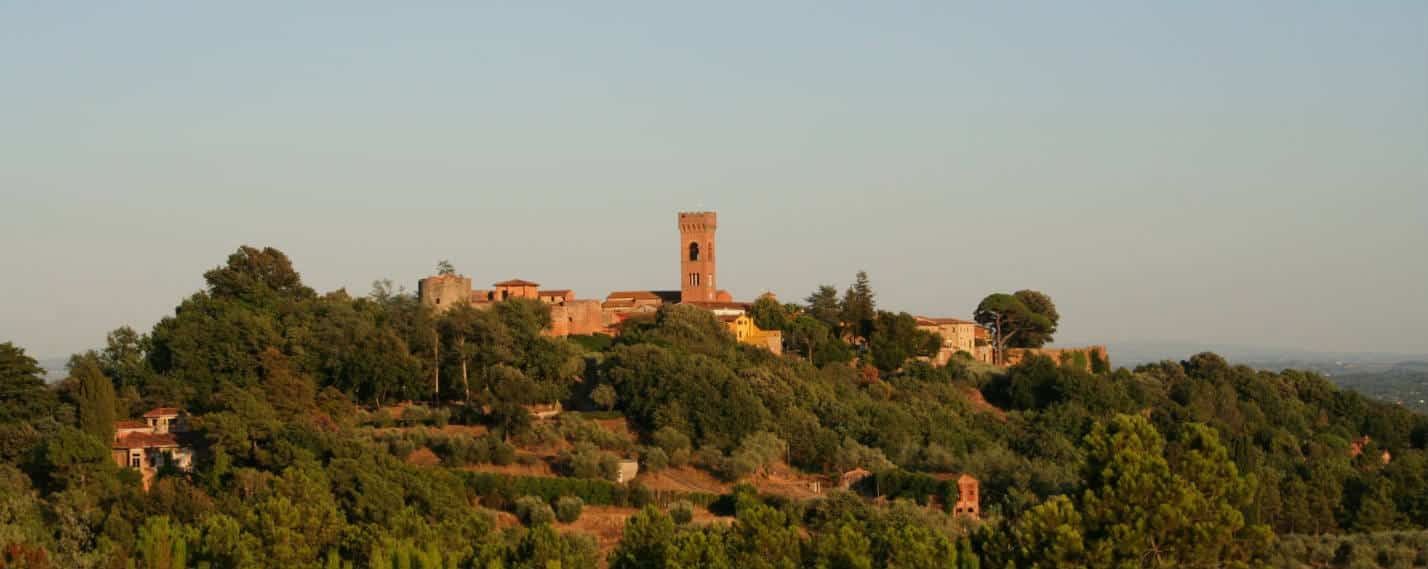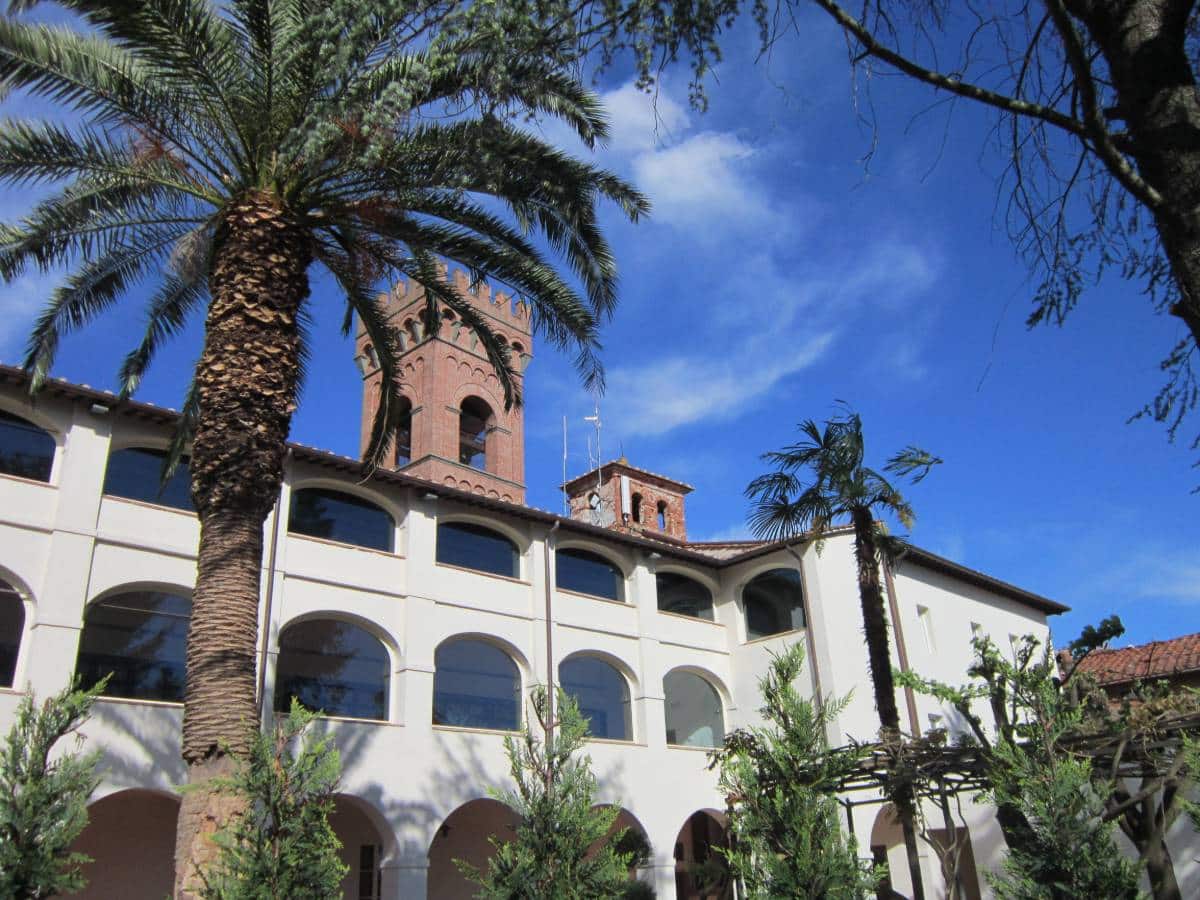At the beginning of Via Roma, between Piazza della Fortezza and Piazza della Chiesa, there is one of the largest buildings in Montecarlo. The Pellegrini-Carmignani Institute, currently painted white, formerly the Monastery of the Poor Clares, is now the seat of the Municipal Library, the historical and current archives of the Municipality, as well as various village associations.
Accessible to all visitors is the small church of the convent, with entrance in Via Roma, dedicated to St. Anne (with the nice choir above), and the former cloister of the monastery now converted into a public garden. Of particular interest, but not accessible, inside the building are the 16th century painting of the Madonna del Soccorso at the branch of the Cassa di Risparmio, the Monastery cellars and the historical archives of the community of Montecarlo, which until 1881 also included the hamlets of Altopascio, Marginone and Spianate. The project to build a cloistered monastery had matured, in Montecarlo, between the end of the 16th and the first decades of the 17th century, in the wake of the religious rebirth urged by the Council of Trent. The building was begun in 1610, based on a design by the Florentine architect Gherardo Mechini, and finished four years later; the house was entrusted to the Poor Clares who came to Montecarlo from the monastery of Fucecchio. Between 1626 and 1646 the monastery was enlarged with the insertion of the building until then residence of the Vicars (Palazzo Pretorio) moved to a building at the beginning of the left side of Via Roma, Palazzo Guiduccini now owned by Fantozzi.
The Poor Clares remained in Montecarlo until 1810, when the Napoleonic laws suppressed the religious community, which was dispersed. The building put up for auction, was later redeemed and destined, thanks to a generous bequest from the noblewoman Anna Pellegrini Carmignani, to a Conservatory with an elementary and work school for the religious and civil education of the girls of the Municipality of Montecarlo. Entrusted to the administration of a lay deputation, it was managed, until a few years ago, by the Franciscan nuns of the Stigmata who left an indelible fond memory in the population of Monte Carlo.
Of particular suggestion the ancient well in the courtyard, here lost her life, in a dark night of the late nineteenth century, a young nun afflicted, it is said, by love pains.



